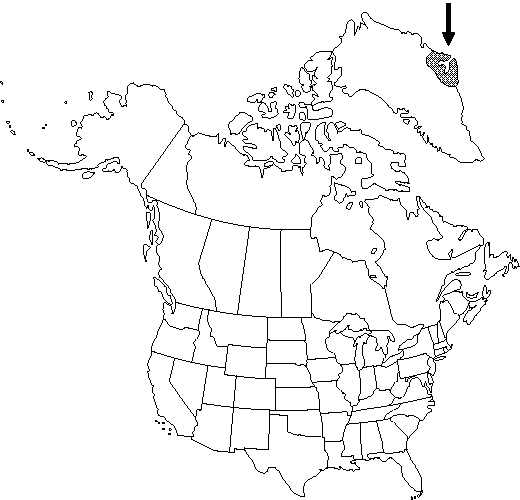Ranunculus auricomus
Sp. Pl. 1: 551. 1753.
Stems erect or ascending, 12-30 cm, glabrous, each with 1-4 flowers. Roots filiform, 0.2-0.6 mm thick. Basal leaves persistent, blades reniform, 3-parted, 1.2-2.8 × 1.6-4.6 cm, segments again lobed or parted, base cordate, margins toothed, apices of segments rounded in outline. Flowers: pedicels appressed-pubescent; receptacle finely canescent; sepals 4-7 × 2.5-4 mm, abaxially sparsely pilose, hairs colorless; petals 5, 6-10 (-15) × 5-9 mm; nectary scale glabrous. Heads of achenes globose to short-ovoid, 5-8 × 5-6 mm; achenes 2-2.2 × 1.8-2 mm, glabrous or sparsely and finely canescent distally; beak lanceolate, weakly to strongly curved, 1.2-2 mm. 2n = 16.
Phenology: Flowering summer (Jul–Aug).
Habitat: Moist arctic shrubland or herbland
Elevation: 100-500 m
Distribution

Greenland, Eurasia
Discussion
Ranunculus auricomus is predominantly apomictic, with irregular meiosis. Different European races may show a variety of characteristics not found in Greenland material (pilose stems, undivided, crenate-dentate leaves, densely canescent achenes, and glabrous receptacles). T. W. Böcher et al. (1968) recognized three distinct races from Greenland, distinguished by minor differences in stature and branching of the plants, width of cauline leaf segments, and indument of achenes. Those races, which were evidently based on very few collections, were named as subspecies by L. Fagerström and G. Kvist (1983). More ample material collected during the 1980s does not support the Fagerström and Kvist classification. Except for stature and branching, which both depend on the general vigor of the plants, these characteristics are poorly correlated with one another and with geographic place of collection. Cauline leaf segments sometimes vary in width within a single collection, and achenes of the Ymer Island collection that they referred to R. auricomus subsp. glabratus are sparsely canescent, not glabrous as stated. These observations, together with the uniformity of indument, leaf shape, and receptacle and achene morphology in the Greenland populations, suggest that they are best considered a single race within the variable apomictic complex comprising R. auricomus in the broad sense.
T. G. Tutin and J. R. Akeroyd (1993) treated Ranunculus auricomus var. glabratus as a synonym of R. affinis (= R. pedatifidus var. affinis; see above). The characteristics in that key and description (leaves palmately 3-5-lobed, achenes in globose heads) do not match American material of R. pedatifidus var. affinis.
Selected References
None.